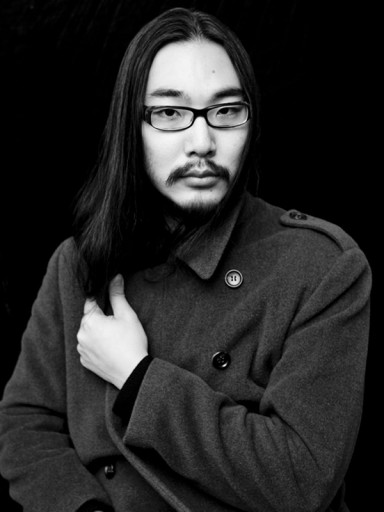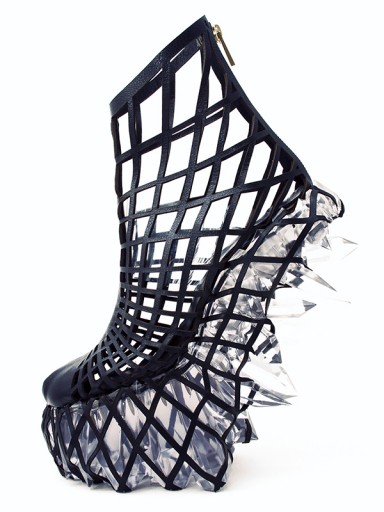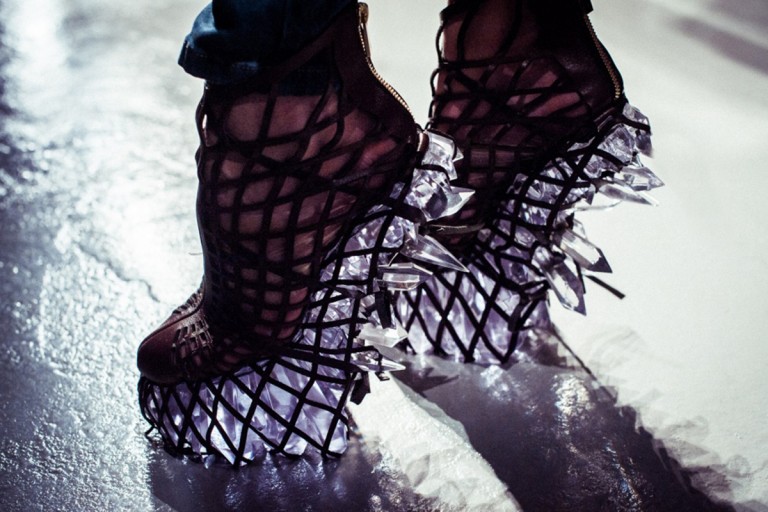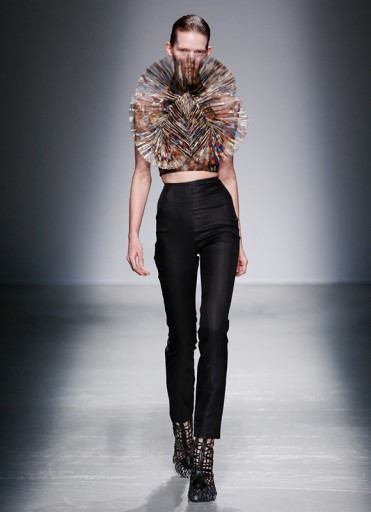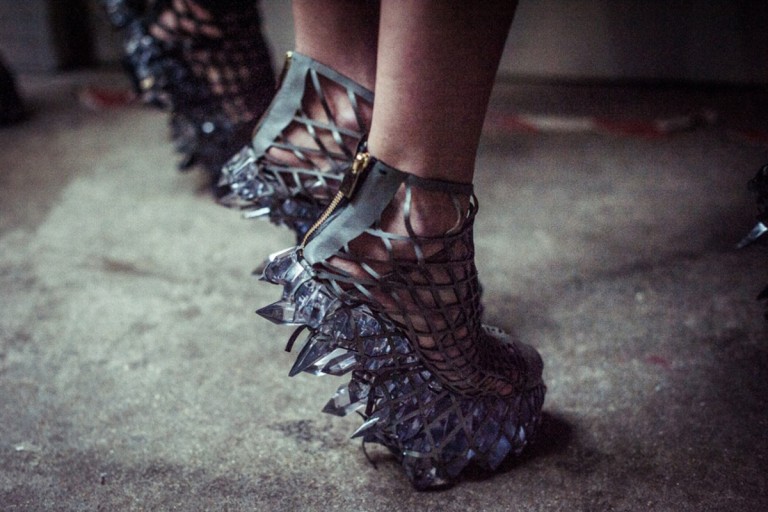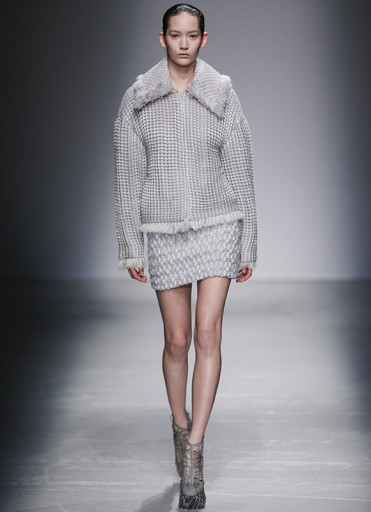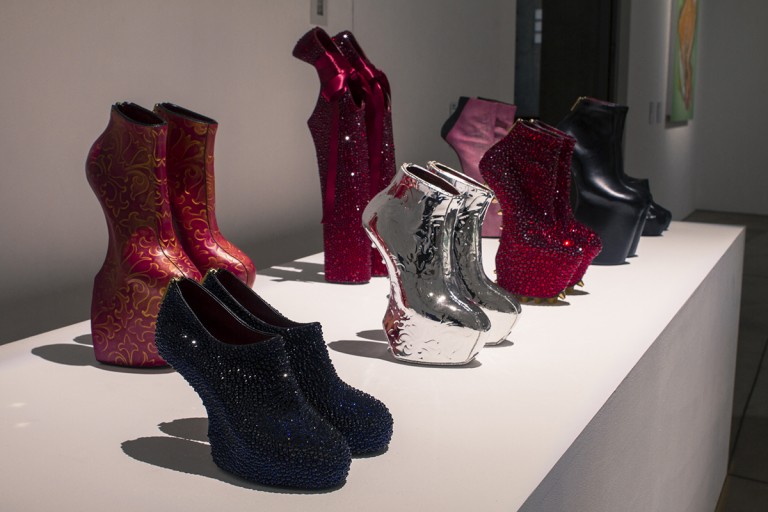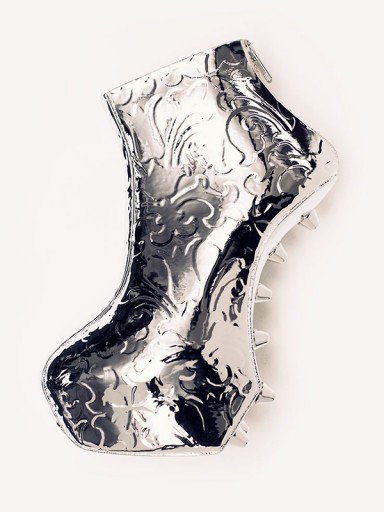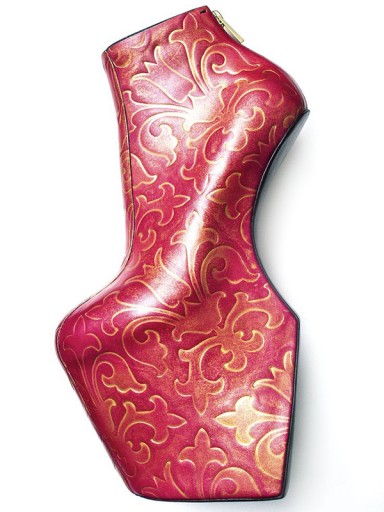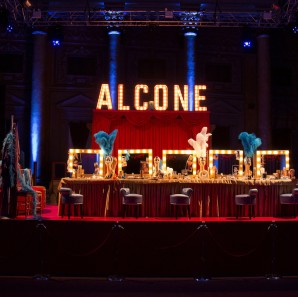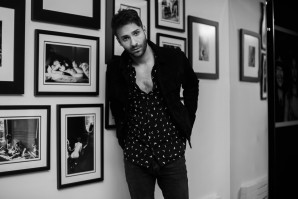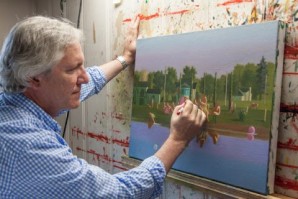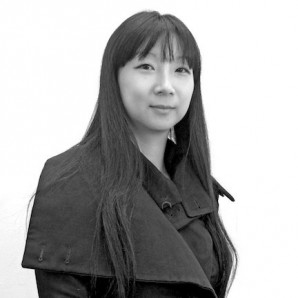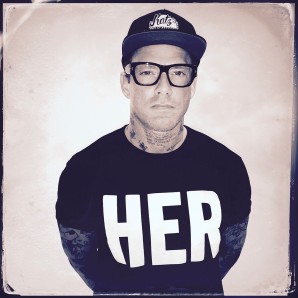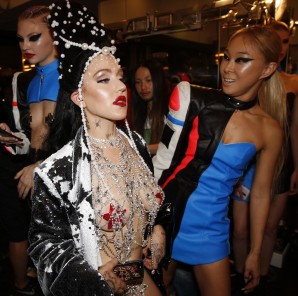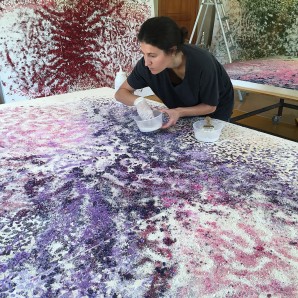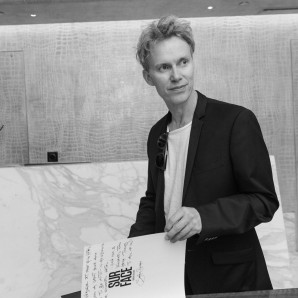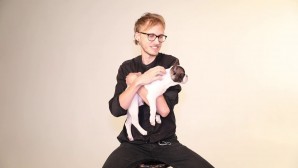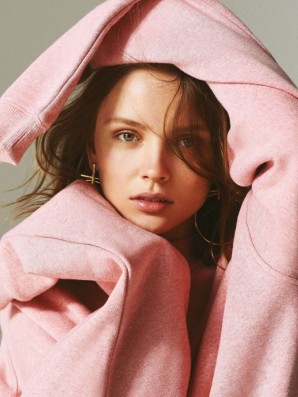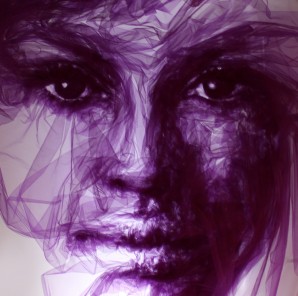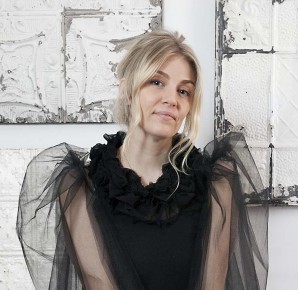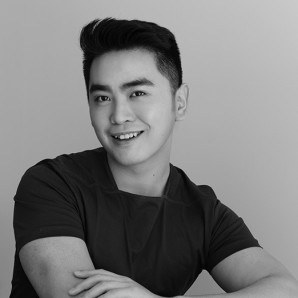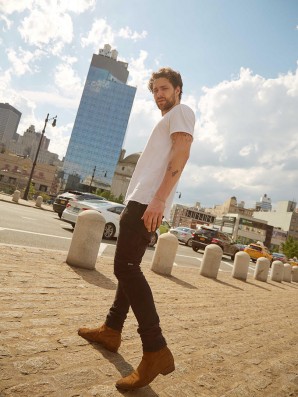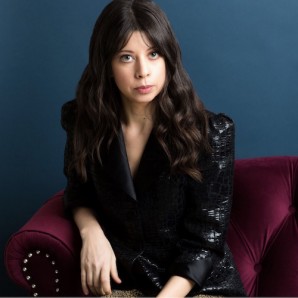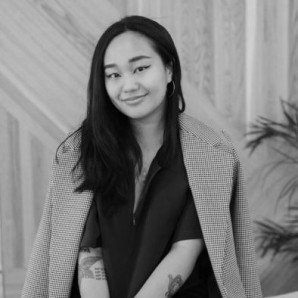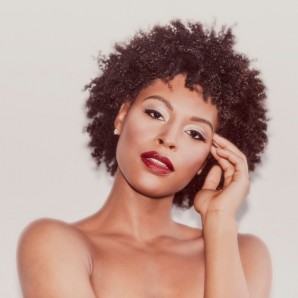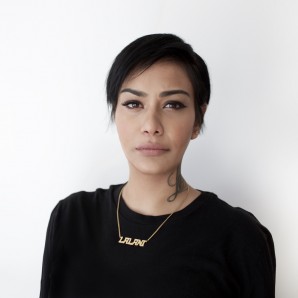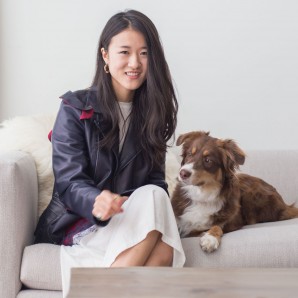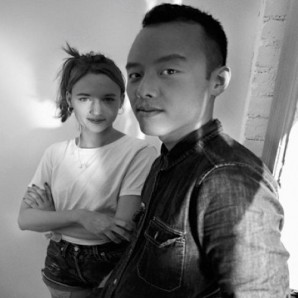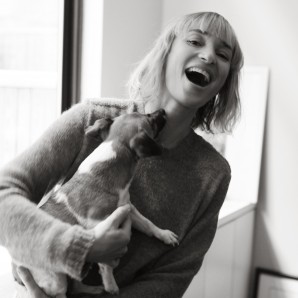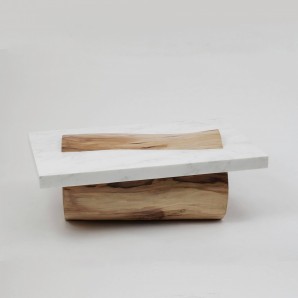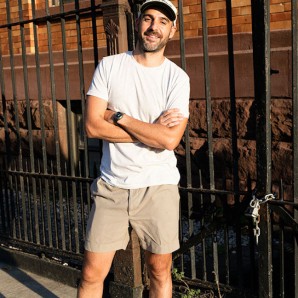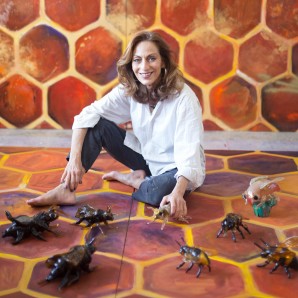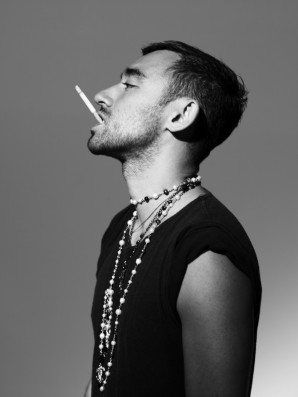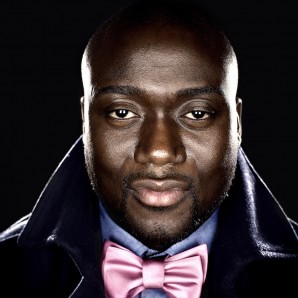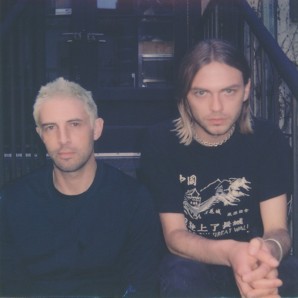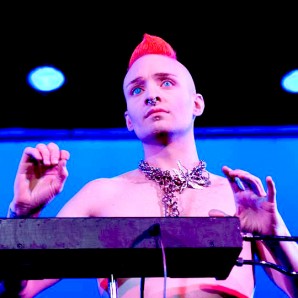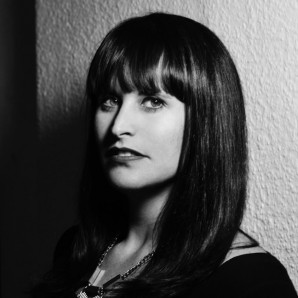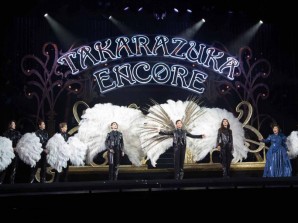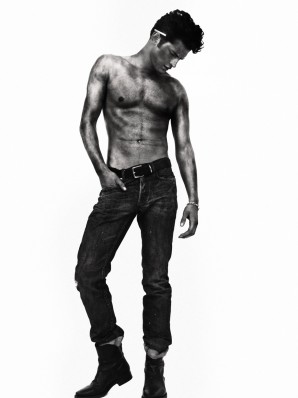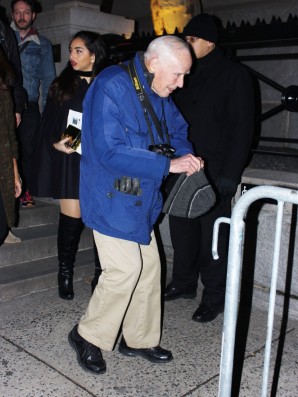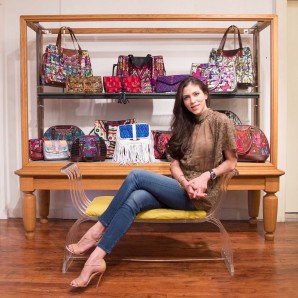No make-up company has a more storied history firmly ensconced in New York showbiz.
Noritaka Tatehana Exclusive Interview
The talented young Japanese designer, Noritaka Tatehana, who collaborated with Iris Van Herpen to design Lady Gaga’s shoes.
Today, Lady Gaga is probably one of the most famous pop artist of the 21st century. Regarding Lady Gaga’s style, the “heelless shoe” could possibly be considered one of her most well-known and iconic accessories. Did you know that the person who created Lady Gaga’s iconic “heelless shoes” was just young 24-year-old Japanese designer named Noritaka Tatehana at that time?
On March 10th, 2015 Noritaka Tatehana unveiled his stunningly unconventional 3D crystal shoes at the collaborative show between himself and Iris Van Herpen at the Fall/Winter Paris Fashion Week Collection. These works of art/shoes have his signature lack of a heel and thrusting crystals as the platform. Recently, TWELV asked Mr. Tatehana about this collaboration with the Holland fashion brand, Iris Van Herpen which is known for its unique and futuristic design.
---------- Noritaka Tatehana's Interview ----------
1. What was the beginning of this collaboration with Iris Van Herpen?
I’d never meet her before, but I knew of her. I was thinking that our direction for the brand is quite similar and we also have a mutual friend, Daphne Guinness, so I’ve always been thinking that if we were to do something together, it would be really interesting.
One day, she came to Japan for the event of a collaboration with Dom Perignon, and I was also invited the event, so I said hello. Then she asked to collaborate with me. So that was the beginning of this collaboration and I am very happy that I was able to be a part of it.
2. Was it time-consuming to produce the crystal shoes for the runway?
Honestly, that was incredibly hard work. When I normally make the shoes, I don’t fill the inside of platform with material, so usually the inside is empty. However, for this time, it didn’t look bright and clear if I made it like that. That’s why I had to fill the inside of platform with the material. It meant the shoes would be really heavy, so I had to think about two things at the same time: confortance and function. It was because of the models that they worked on the runway!
3. What were the good points of collaborating with her?
The greatest thing for me was that I could stimulate the young designers because of this collaboration at Paris collection. In most cases, a lot of young Japanese designers can’t go to Paris Fashion Week on their own ability, they need a sponsor or something. I didn’t want to go that way. I wanted to go to that kind of stage by myself, so I think that was the greatest thing, that I could do this with no support. Actually, I think collaborating with a foreigner designer like this time is surely spreads the world.
4. What’s your inspiration for usual shoes making?
I was born in 1985, so that was about 40 years after the world war. It means that there were so many histories that I didn’t know. The Japan of today required so many turning points like Meiji-Ishin, the revolution of the Emperor, and a World War.
And our generation didn’t know that, right? So we live without knowing about these histories and when I became artist with this job, I realized that artists especially need a sociability. “Sociability” means not only thinking about oneself, but also society as a whole. For example, thinking of the position of Japan in this world, or thinking of one’s position in Japan, and thinking what one should do. Artists need to have this kind of consciousness. Ultimately, I felt that the thing that I couldn’t choose was my fate; like to be born as a man, or to be born in Japan or something like that. Then, I decided to learn about it, about “the background of my background”. So perhaps inspiration might come from in my own mind.
5. Why do you think Japanese culture is important to you?
The main reason is that “I cannot choose my nationality.” Being Japanese, this could be my destiny, or it could be a necessity. I was too familiar with Japanese culture to tell the difference between views from foreigners seeing the Japanese and views from Japanese people seeing themselves when I was in Japan. After I stepped out of Japan, I felt that foreigners think that the Japanese are inspired by their own culture. For instance, in Japan, European-style goods are very popular because they are unique in Japan. In other words, I guess the identity of the country is really important.
6. How were you inspired by Oiran?
In university, I was studying about the Kimono as traditional Japanese fashion. However, there are many different types of Kimono: for citizens, for feudal lords, etc. Oiran fashion was really avant-garde at that time in Japan, and I was studying fashion which was tricky and eye-catching. So it quite matched with what I was seeking. I think it’s the same as young girls wearing Jeremy Scott to intimate Katy Perry.
7. You said that you want to be seen as a craftsman, more than to be considered an artist. To you, what’s the difference between them?
Now I don’t do every process from start to the end when I make shoes, but I have a feeling that I always want to be a craftsman. If I stop making the shoes with my hands, there will be so many things that I can’t comprehend for real. For instance, when I say “let’s make this shoe with this material” without knowing about the function, it doesn’t come out right. That’s meaningless. Because of this reason, I prefer to keep being a craftsman. And I think this is also good point of Japan too. For example there are many famous Japanese manufactures like the auto-mobile maker, Honda and the instrument maker, KAWAI whose founders were all craftsmen. A lot of Japanese people don’t know this story, but these companies support this country with great achievement. And the CEO of famous companies like these in Japan are usually creators and craftsmen. Of course, I have to go for the business side sometimes, but I always want to be a craftsman because I want support Japanese industry like them. But my mind might be an artist all the time.
8. What is your ultimate goal?
I felt that being an artist seems a really personal job, but it actually really isn’t a personal job. I felt this way after I started to work as an artist professionally. This is my life, but an artist's job is reflecting the era at that time. Their artwork should link to their mind and what’s happening at that time in their country, and I think artists need to make it work during the changes in periods. Speaking of my own experience, 2010 was a turning point in Japanese fashion. The changes in the era and artists should be linked to historical events happening, like world affairs or natural disasters.
My work is collected by a lot of museums, but museums are where human history is stored. For example, Strawberry Fields by Yoko Ono, this kind of creation has a message worth remembering. I don’t know when I will die, so I think my mission is to form the era exactly and then to turn it over to the next generation because I feel I’m required to do this kind of thing.
9. You always had a dream to work around the world. Do you feel that your life is exactly what you wanted now?
Because I wanted to work around the world, I had a specific vision and I did complete each objective one by one.
So almost everything is exactly as I wanted. Now I can do what I wanted, and I am more successful than I could have imagined, and I don’t feel that I have failed more than I expected. I suppose that preparation is really important. I’m glad that I kept continuing with what I wanted. When I didn't pass the university entrance exam, my grandmother said “Quit. You have no talent.” But I didn’t quit at that time and I think that was great decision. You have to decide your way by yourself. That is the most important thing in life.
10. Please leave a message to young boys and girls.
I don’t want them to imitate, but use. I mean I was the one who really imitated society, so I was thinking that I will be the top because I don’t want to be thought as the same designer as that one who I don’t think great. But when you imitate something, it’s when you are jealous for it at the same time. So I guess if there are some people who imitate me because I showed in Paris Fashion Week this time, I don’t want them to imitate, but to look closer. In other words, I hope they use my experience as a tool and study. This time, I worked with foreign people and I could attend Paris Fashion Week in the end. With this opportunity, I think I could show the same things as they do.
I had times when I was really imitating society, but when I try to out to the world, the people who I referred to were predecessors like Issei Miyake, Takashi Murakami, and many other successful people. I think I wouldn’t be successful if they did not exist. So in order to see as a reference, I want young designers to use my work as a case study. I can say anything like “hang in there with big dream!” or something. If I can provide something, it will be this kind of information. That would be the most influential information I guess.
INTERVIEWED & WRITTEN BY: MARIE ABE
PHOTO CREDIT: NORITAKA TATEHANA, TEAM PETER STIGTER, MORGAN O'DONOVAN
EDIT BY: SUSAN SCHELL
related posts
Alcone 65th Anniversary @Capitale: Interview with CEO Maria Stewart
Ikemen #35: Zaher Saleh
IKEMEN (ē´k´mɛn): Japanese Slang
"REALLY, REALLY, RIDICULOUSLY GOOD LOOKING PEOPLE"
Interview: Neurosurgeon-turned-Artist Keith Kattner on the Surgery of Classical Painting
Dr. Keith Kattner does not have the typical background one would expect of a successful neurosurgeon.
New Type #27: Nika Tang Interview
San Fransisco-based designer Nika Tang has emerged as boldly committed to her ideology as to her pieces. Her namesake brand centers...
Interview: Becky Donnelly's Fashion Creatures
Quirky girl from Dublin with a penchant for drawing fantasy creatures relocates to London after art school.
Kaimin Interview & S/S18 "Slut from the Future" Presentation @ the Top of the Standard
Pulsing with a heavy beat and hazy with a deep rouge glow, the Top of the Standard is as glamorous a place to be as ever. And tonight it is packed with partygoers.
Yasmina Alaoui Interview & Opera Gallery Exhibition
Yasmina Alaoui burst onto the international arts scene in 2003 with "Tales of Beauty," a collection of nude...
Søren Solkær Interview
Stepping out of a cab into the urban symphony of Midtown, the entryway to The Quin Hotel was easy to spot— with classic architecture and...
Kyra Ross of Mona Liza Studios Interview
TWELV sat down with the charismatic Kyra Ross, founder of Mona Liza Studios which falls under his larger moniker "...
Ira Sumbaeva Interview
TWELV sits down with model Ira Sumbaeva to give a glimpse into the story of the cutest Belarusian...
Benjamin Shine Interview: Master of Tulle
Benjamin Shine is an award-winning international artist whose work stretches across industries from fashion...
New Type #25: Mémère – Sarah LeBlanc Interview
Upon arriving to the Mémère studio, it felt like stepping from the bustle of New York City...
IKEMEN #34: GABRIEL LIBERTY
IKEMEN (ē´k´mɛn): Japanese Slang
"REALLY, REALLY, RIDICULOUSLY GOOD LOOKING PEOPLE"
NEW TYPE #23: ANE AMOUR – IYALA ANNE INTERVIEW
“Introducing a talented designer giving sophisticated femininity an edge”
NEW TYPE #22: Allina Liu INTERVIEW
Born and raised in New York City– we could also add, "in love with”– Allina Liu is a refreshing womenswear designer, who questions the...
NEW TYPE #21: Kendall Miles INTERVIEW
“My passion is shoes. Kendall Miles shoes are beautiful, alluring and handcrafted in Italy: the perfect pair for the woman who knows who she is and where she wants to go.”
NEW TYPE #20: Shahista Lalani INTERVIEW
"Introducing an emerging designer creating captivating leather fashions."
NEW TYPE #19: PAMPLEMOUSSE - Danica Zheng Interview
“Introducing a dedicated, innovative designer to awaken every woman’s inner voice.”
NEW TYPE #18: BOOM DONE SHOP - LIAM BERGIN INTERVIEW
“Introducing the new hot British ethical apparel brand BOOM DONE SHOP”
NEW TYPE #17: NAMILA - NAN LI AND EMILIA PFOHL INTERVIEW
NAMILIA was founded in 2015 by Berlin based designers Nan Li and Emilia Pfohl. The duo met while attending University of the Arts Berlin.
Isabel Dupre Interview
Isabel Dupre Interview is now available!
Check inside for the Full Page Interview.
IKEMEN #33: DANIEL VIEDMA
IKEMEN (ē´k´mɛn): Japanese Slang
"REALLY, REALLY, RIDICULOUSLY GOOD LOOKING PEOPLE"
Judi Harvest INTERVIEW
“We’re all bees, we need to dance more and always search for beauty,” Judi Harvest proclaims.
BEHIND THE SCENES #4: Nicola Formichetti
TWELV's Behind the Scenes takes a step back and visits the masterminds behind the camera.
IKEMEN #32: TERRY DOE
IKEMEN (ē´k´mɛn): Japanese Slang
"REALLY, REALLY, RIDICULOUSLY GOOD LOOKING PEOPLE"
Name: TERRY DOE
NEW TYPE #16: LINDER - SAM LINDER AND KIRK MILLAR INTERVIEW
“Introducing a new generation of quick and fresh minded designers”
IKEMEN #31: CORNELIUS LOY
IKEMEN (ē´k´mɛn): Japanese Slang
"REALLY, REALLY, RIDICULOUSLY GOOD LOOKING PEOPLE"
Takarazuka CHICAGO Cast Members Interview
“All Japanese, All Women, All that Jazz! We interviewed three cast members of Takarazuka CHICAGO who preformed in the Lincoln Center Festival in 2016.
Sean O’Pry EXCLUSIVE INTERVIEW "Good Ol’ Georgia Boy”
SEAN O’PRY EXCLUSIVE INTERVIEW
"GOOD OL’ GEORGIA BOY”
R.I.P. Bill Cunningham
Bill Cunningham, Iconic Street Style Photographer, Passes away at 87
NEW TYPE #14: Alida Boer - Alida Boer Interview
TWELV Magazine sat down with Alida Boer in NYC to get to know the designer and better understand the intricacies of her designs and company’s mission.

